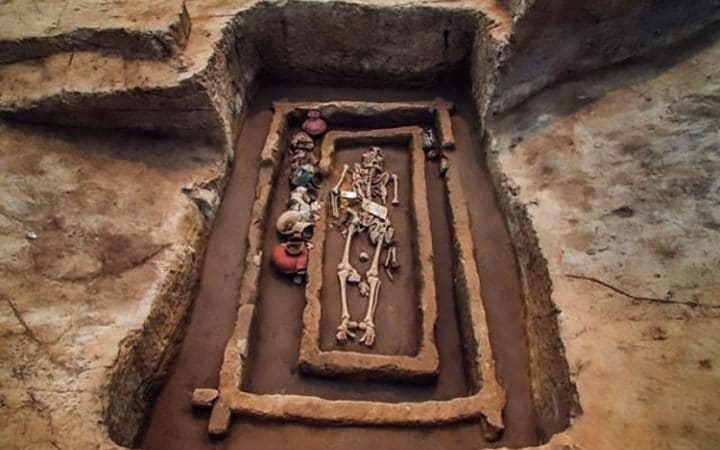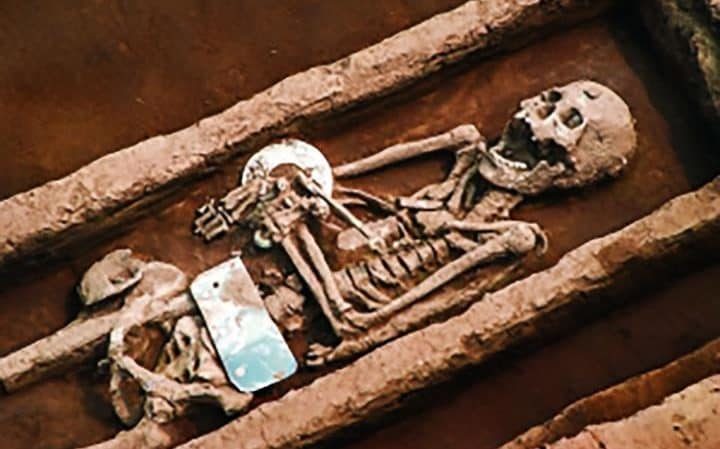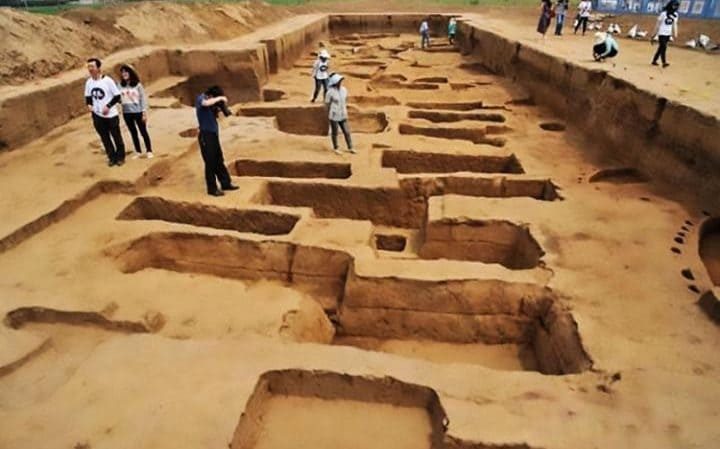The men, whose bones were discovered in Jiaojia village near Jinan City in Shandong province, would have towered above many of their contemporaries.
Many of the men discovered in the graveyard measured 1.8 metres (5ft 11in) tall and would have seemed like giants to the average person 5,000 years ago.
One of the men in the ancient burial ground measured 1.9 metres (6ft 3in), making him a 'giant' of his day.
"This is just based on the bone structure. If he was a living person his height would certainly exceed 1.9 metres," Fang Hui, head of Shandong University's school of history and culture, told China Daily.Archaeologists say their large tombs suggest they were likely considered powerful, high status individuals who had access to better food than the average person.
But what made them so tall? "Already agricultural at that time, people had diverse and rich food resources and thus their physique changed," Fang Hui explained. Millet was the major crop and people raised pigs, according to Fang. Pig bones and teeth were found in some graves.
Today, men aged 18 living in the region have an average height of 1.753 metres (5ft 9ins), which is higher than the national average of 1.72 metres (5ft 8ins). Shandong locals believe height to be one of their defining characteristics. Confucius (551-479 BC), a native of the region, was said to be about 1.9 meters tall.
Archaeologists have discovered a number of artefacts at the site from the Longshan Culture, renowned for its eggshell black pottery, from the Neolithic period.They began excavating the ruins of 104 houses, 205 graves and 20 sacrificial pits in the village last year, China Daily reports.
The Jiaojia ruins fill a cultural blank 4,500 to 5,000 years ago in the lower reaches of the Yellow River, said Wang Yongbo of the Shandong Provincial Institute of Archeology.
Archaeologists found obvious damage to the head and leg bones of some of the bodies and to pottery and jade articles in six large tombs. The damage may have been done not long after the burials and may be due to power struggles among high-ranking people.
Li Boqian, an archaeologist with Peking University, said the excavations showed Jiaojia in a transition phase, but proved the existence of ancient states 5,000 years ago in the basin of lower Yellow River.






[Link]